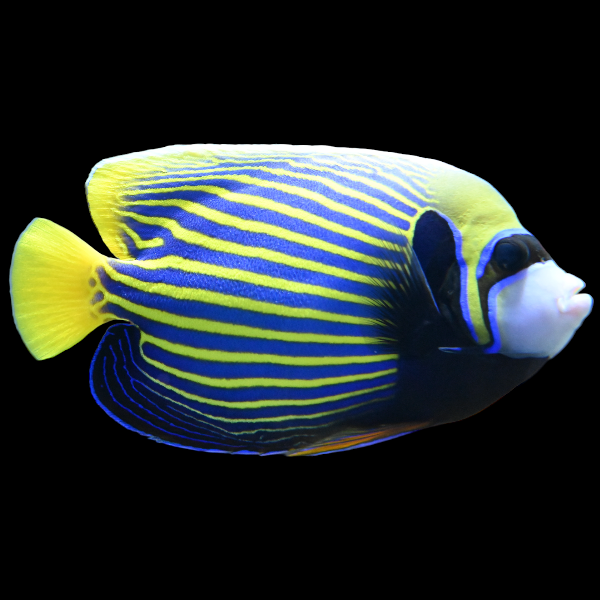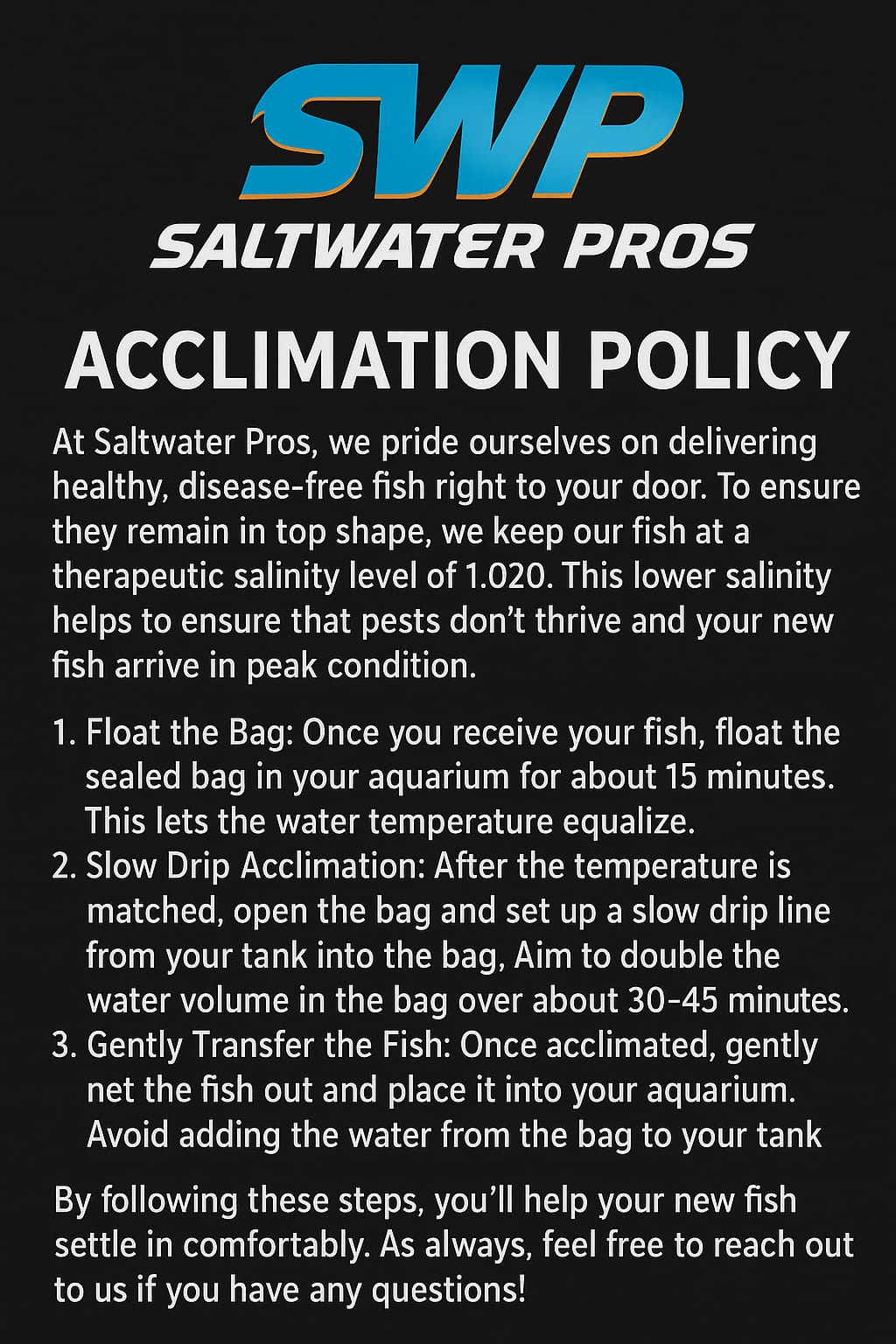Description
Click HERE to read our Dead On Arrival (DOA) policy.
Click HERE for how to acclimate the fish.
The Emperor Angelfish (Pomacanthus imperator) is a stunning marine fish species known for its vibrant colors and unique patterning. It belongs to the family Pomacanthidae and is native to the Indo-Pacific region, particularly the coral reefs of the Red Sea, Indian Ocean, and the western Pacific Ocean.
Here are some key features and characteristics of the Emperor Angelfish:
Appearance: The Emperor Angelfish is renowned for its striking appearance. Juveniles have a predominantly dark blue or black body with circular, electric blue and white rings on their heads and bodies. As they mature, their coloration changes significantly. The adult Emperor Angelfish has a bright yellow-gold body covered with vertical black stripes, with a bold blue-black mask across its eyes.
Size: On average, Emperor Angelfish grow to about 12 to 16 inches (30 to 40 cm) in length. However, some individuals can reach lengths of up to 18 inches (45 cm).
Behavior: Emperor Angelfish are generally territorial and solitary, but they can be observed in pairs during courtship and mating. They are known to be aggressive towards other fish species, particularly those that share similar color patterns.
Habitat: They inhabit coral reefs and lagoons, usually in areas with ample hiding spots like caves and crevices. Emperor Angelfish are found at depths ranging from 3 to 100 meters (10 to 330 feet).
Diet: Their diet consists mainly of sponges, algae, small invertebrates, and coral polyps. As juveniles, they tend to consume more algae but shift towards a carnivorous diet as adults.
Reproduction: Emperor Angelfish have complex reproductive behavior. They are protogynous hermaphrodites, which means they start their lives as females and can later change into males. When a male is absent, the dominant female in a group can undergo this sex change and become a male. They usually spawn in pairs, and the male guards and defends the eggs until they hatch.
- Care level: Moderate
- Temperament: Semi-aggressive
- Diet: Omnivore
- Reef Compatible: With Caution
- Family: Pomacanthidae
- Minimum Tank Size: 220 gallons
-
Size:
Small: 2" to 3"
Medium: 3" to 4"
Large: 4" to 5"
Extra Large: 6"+









